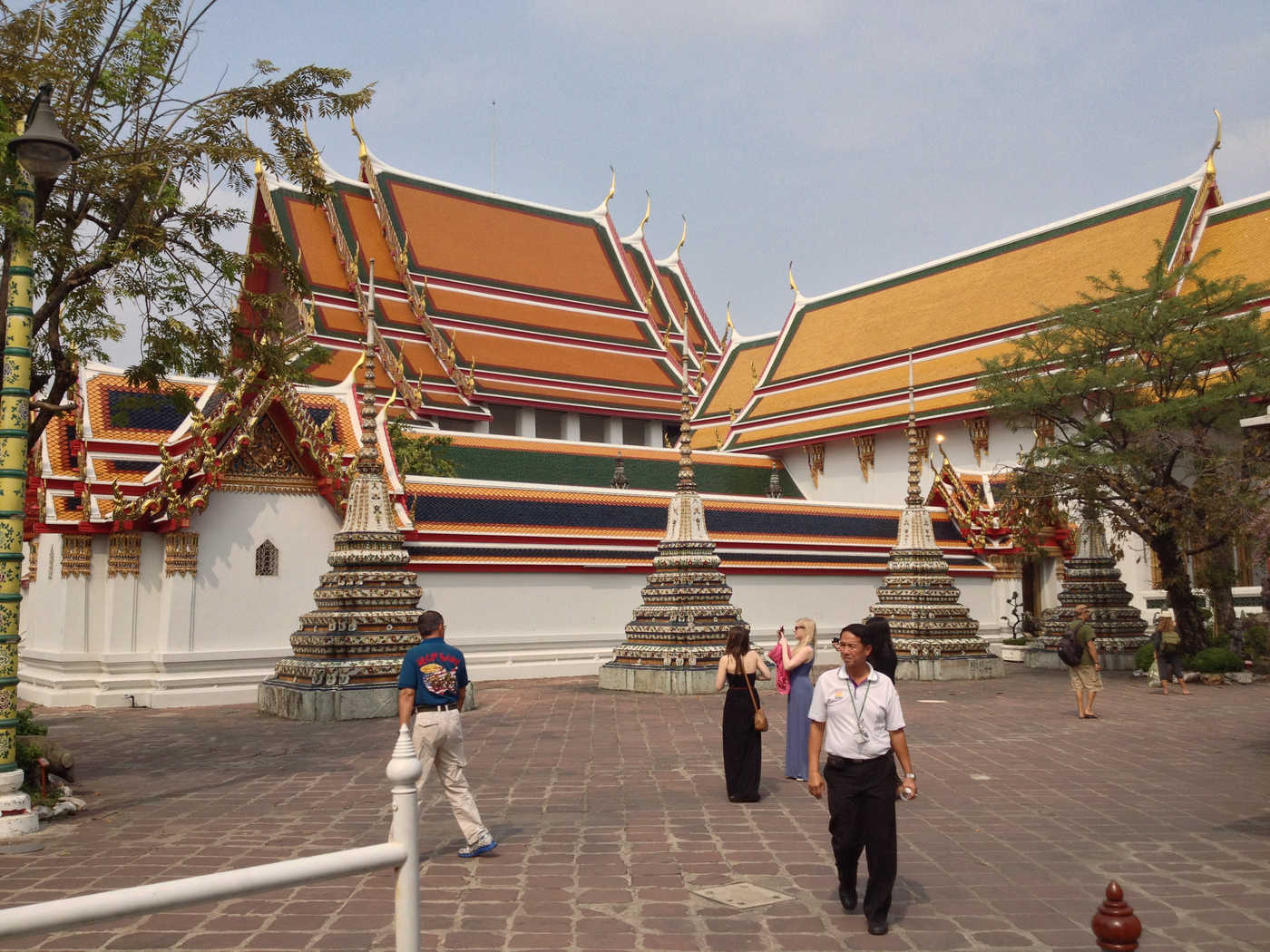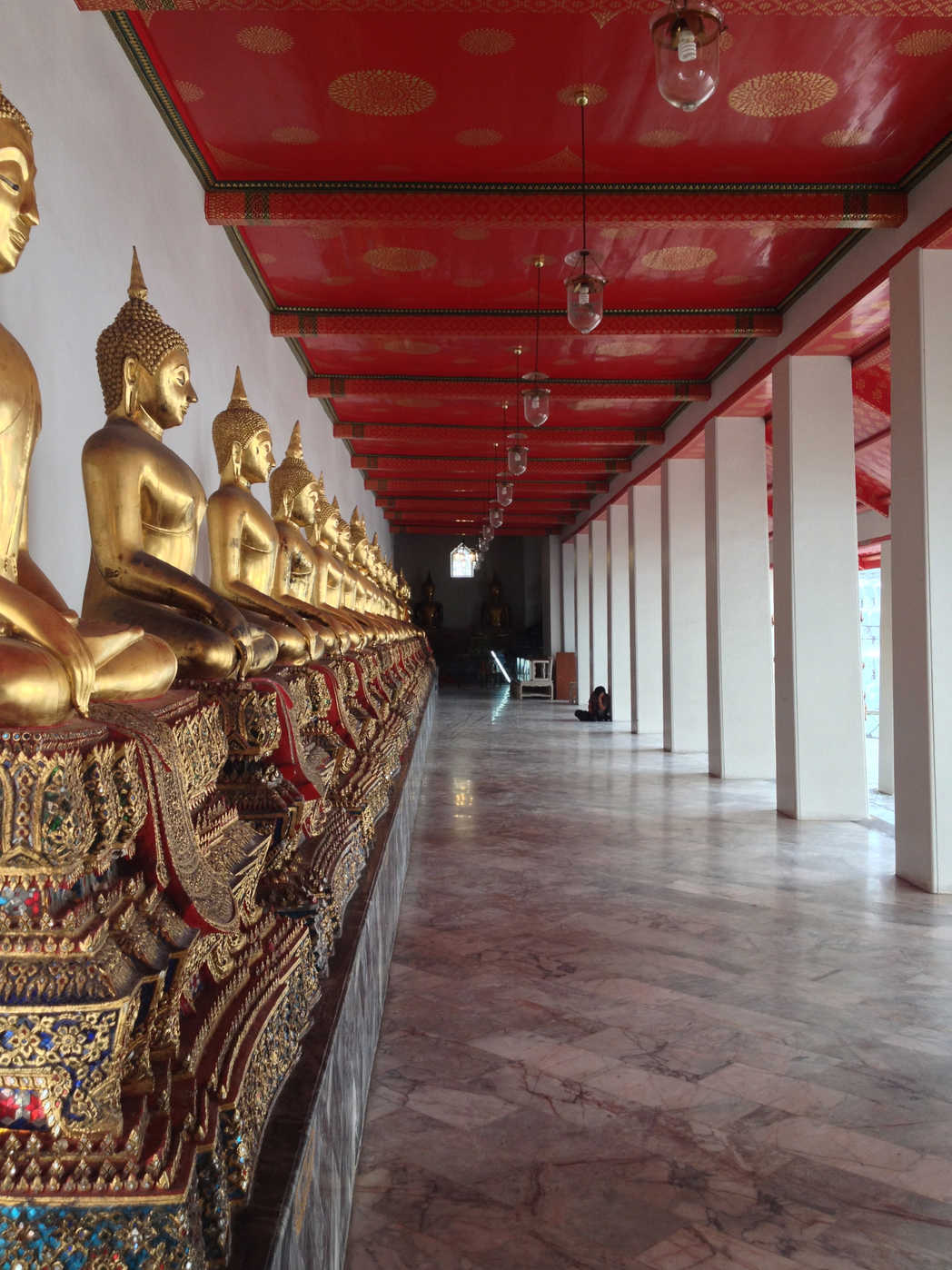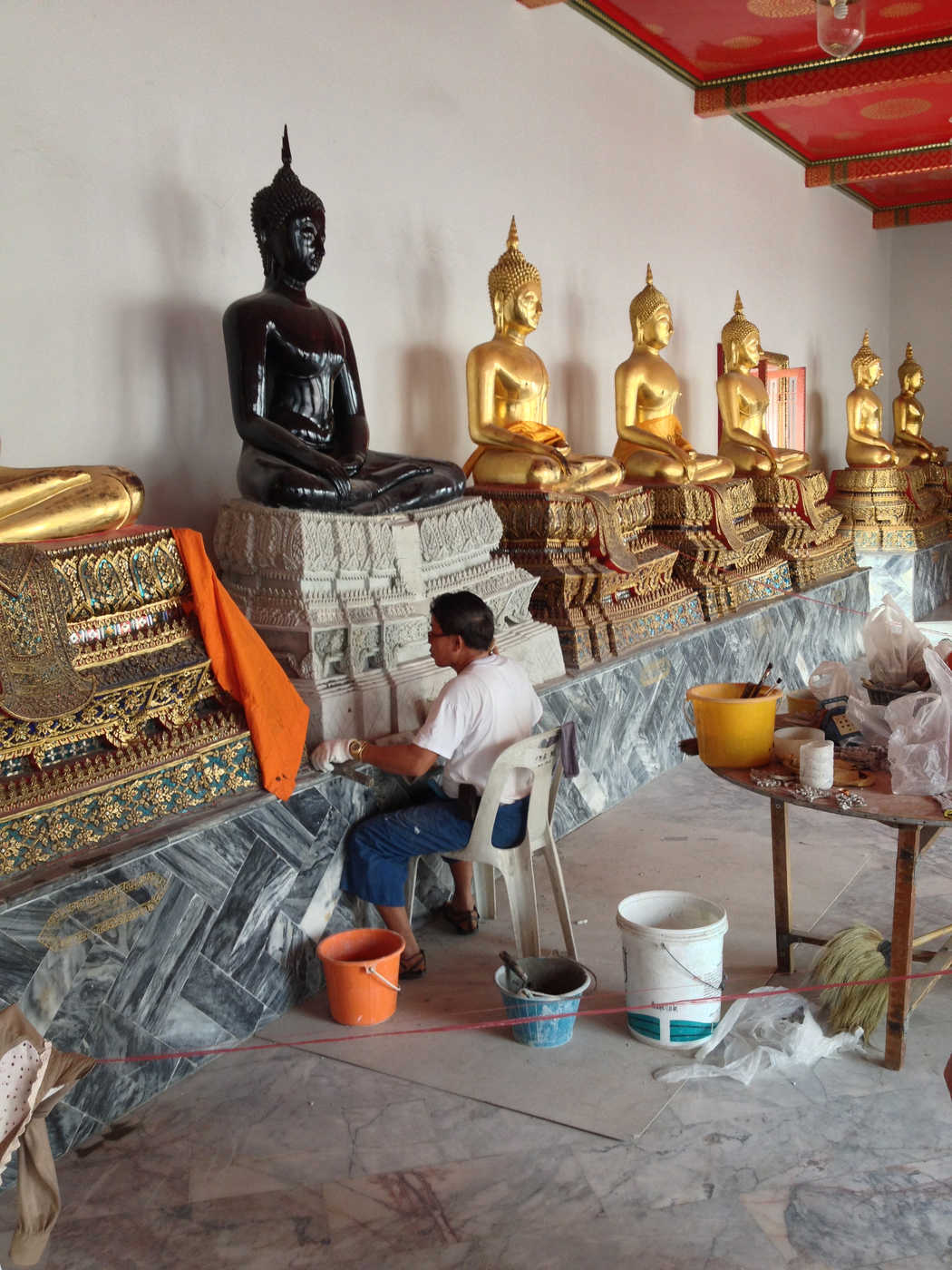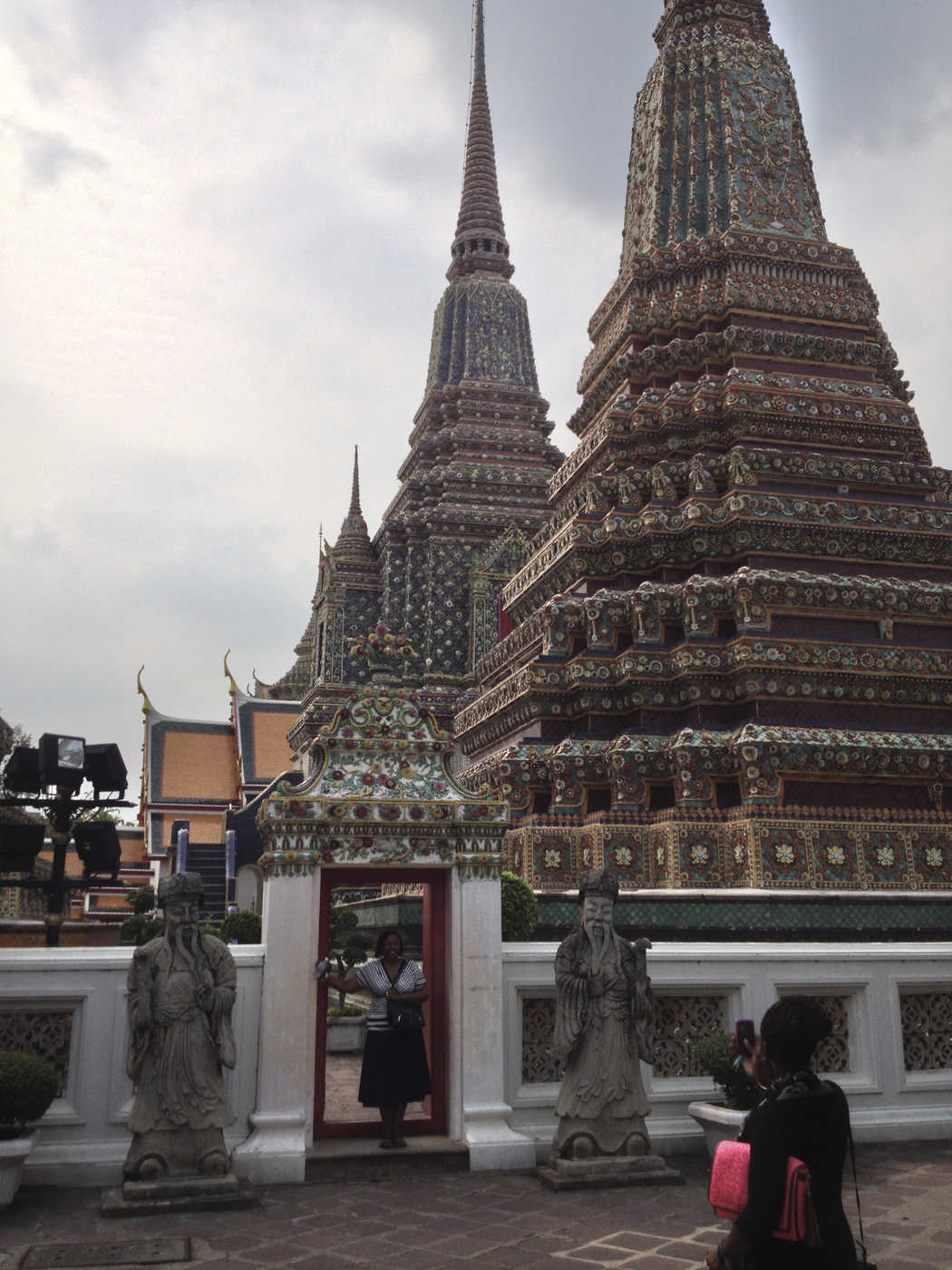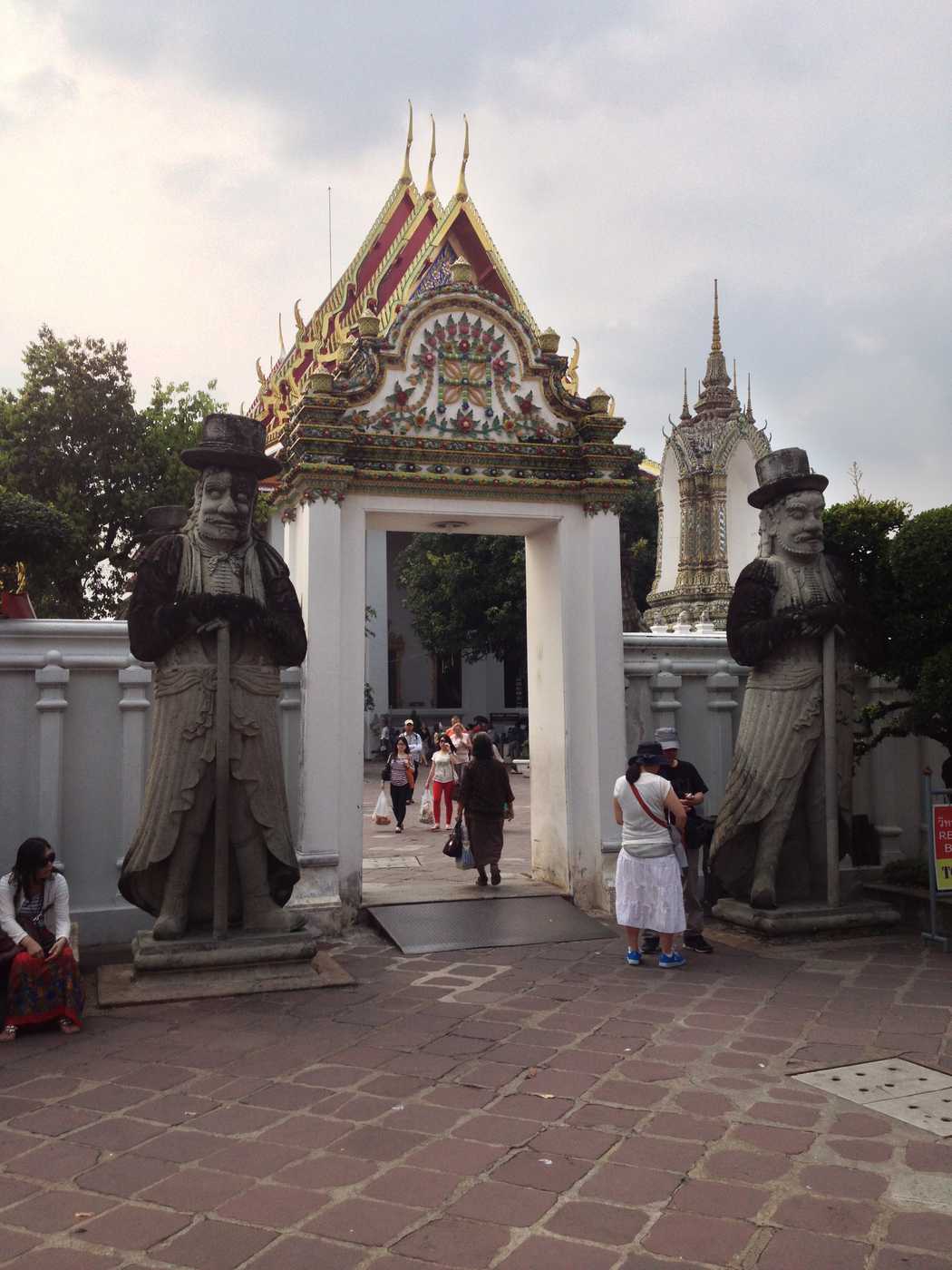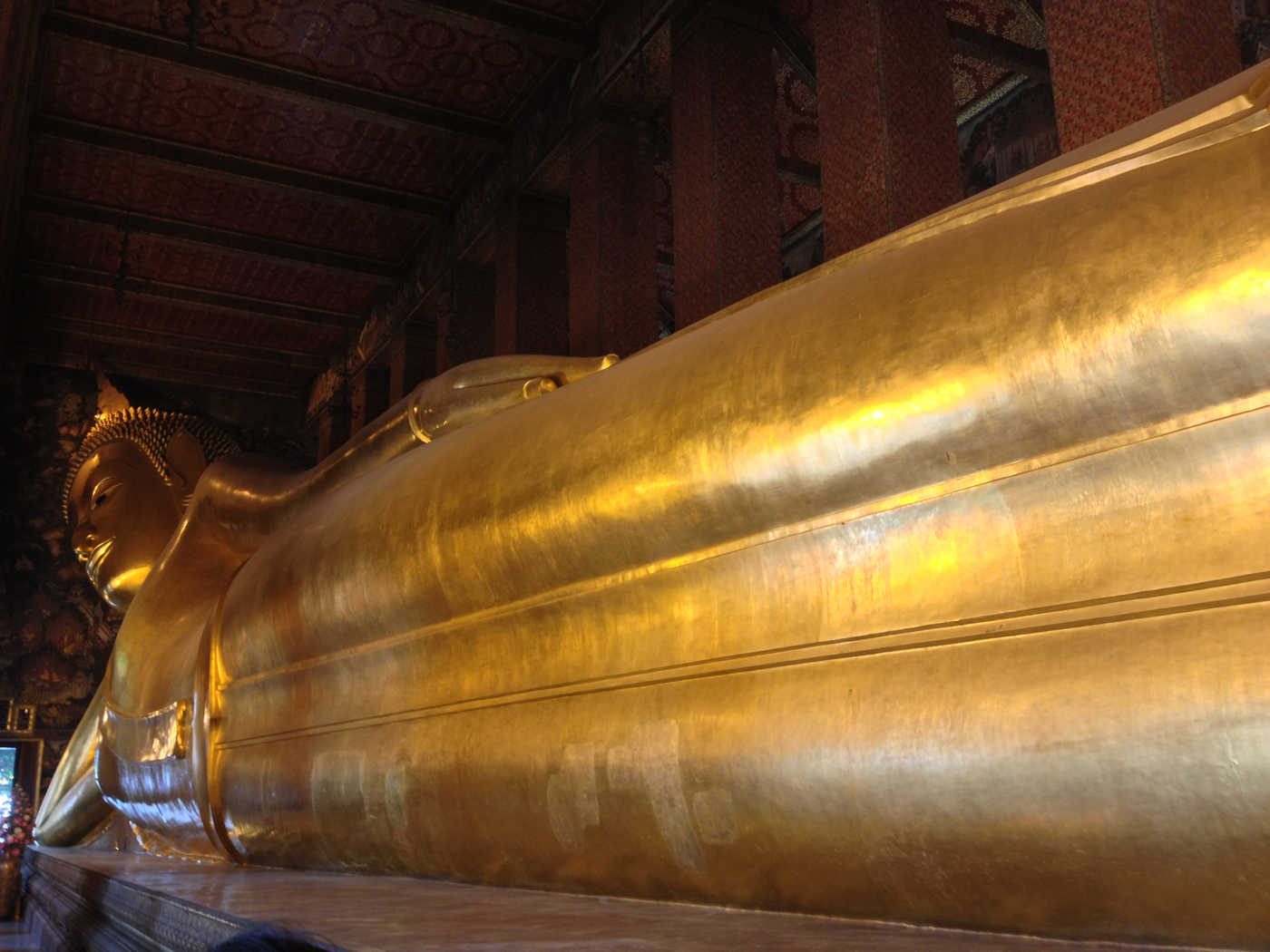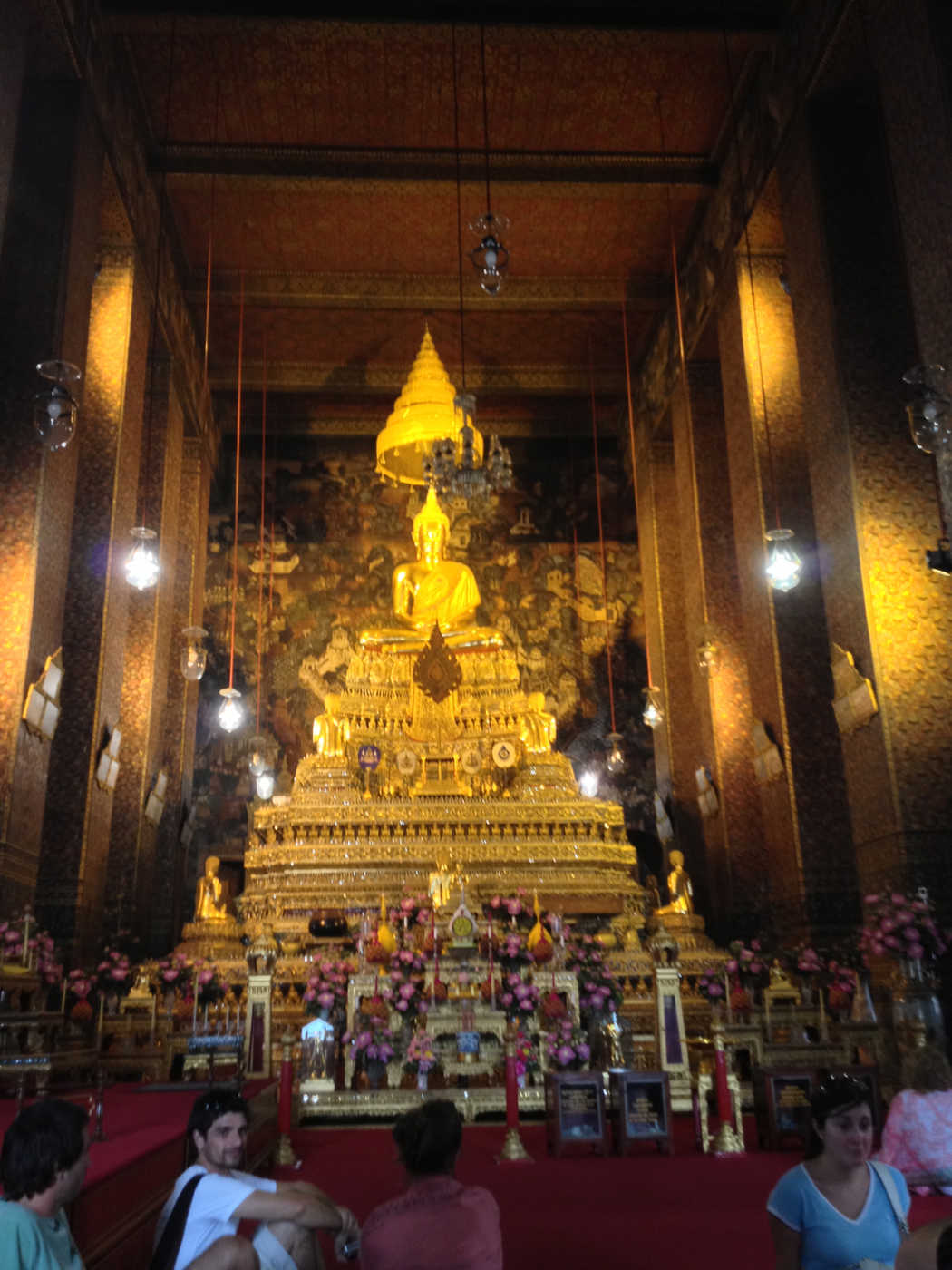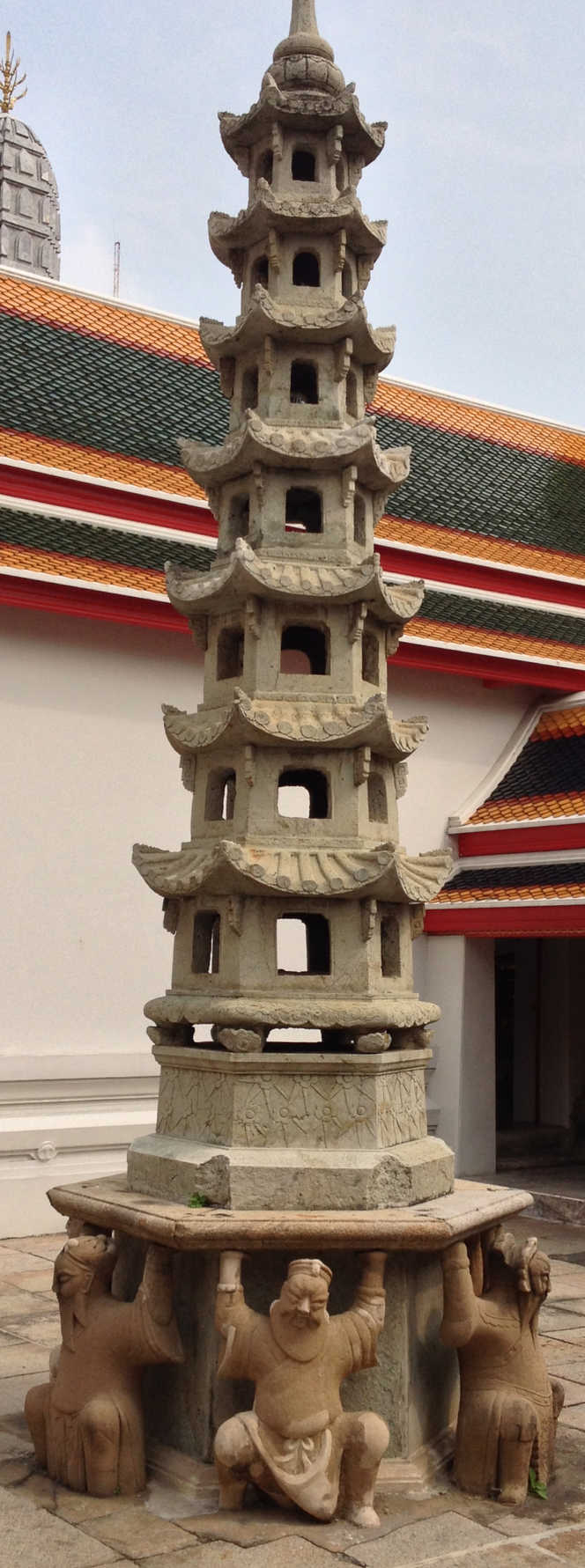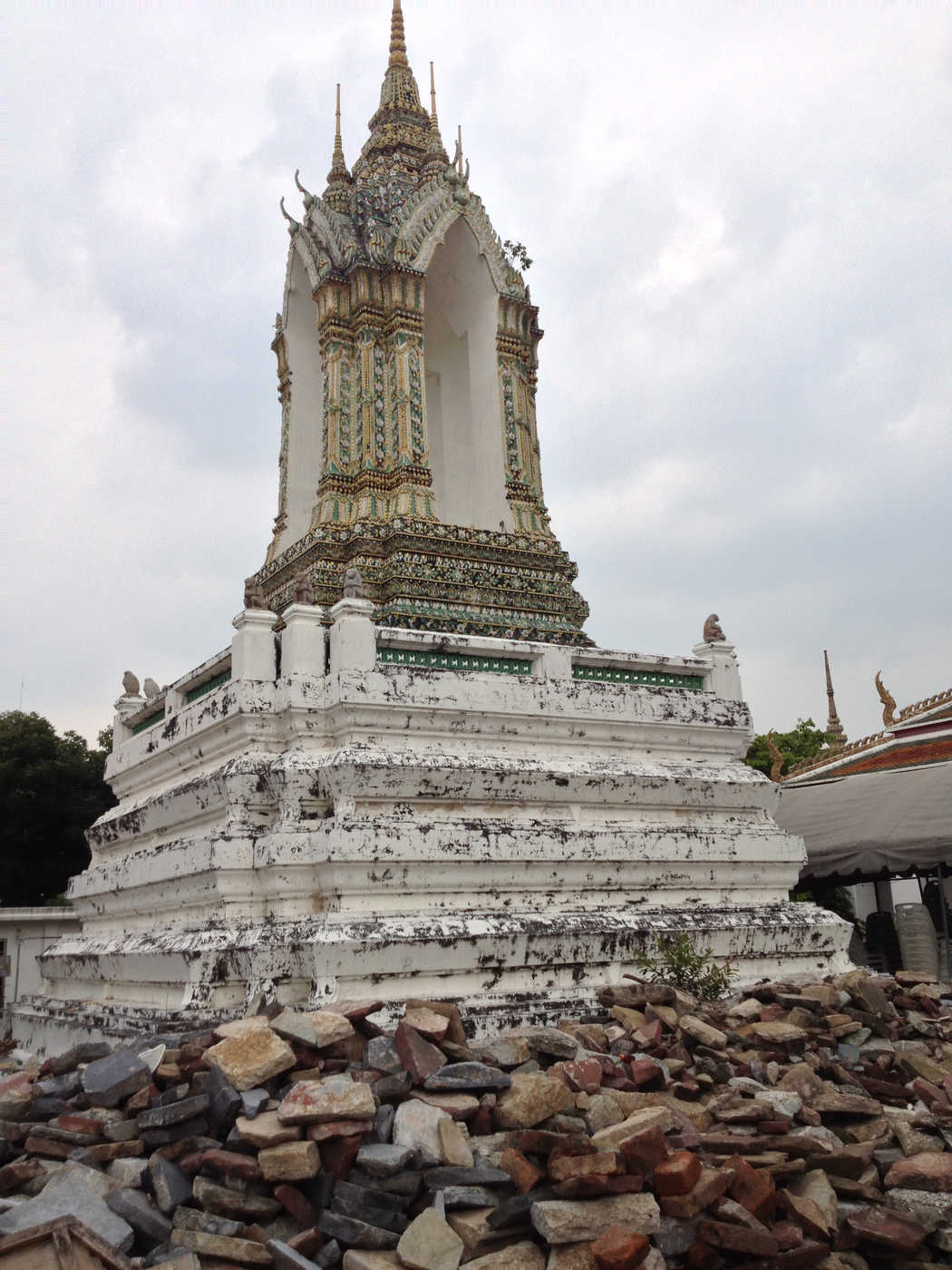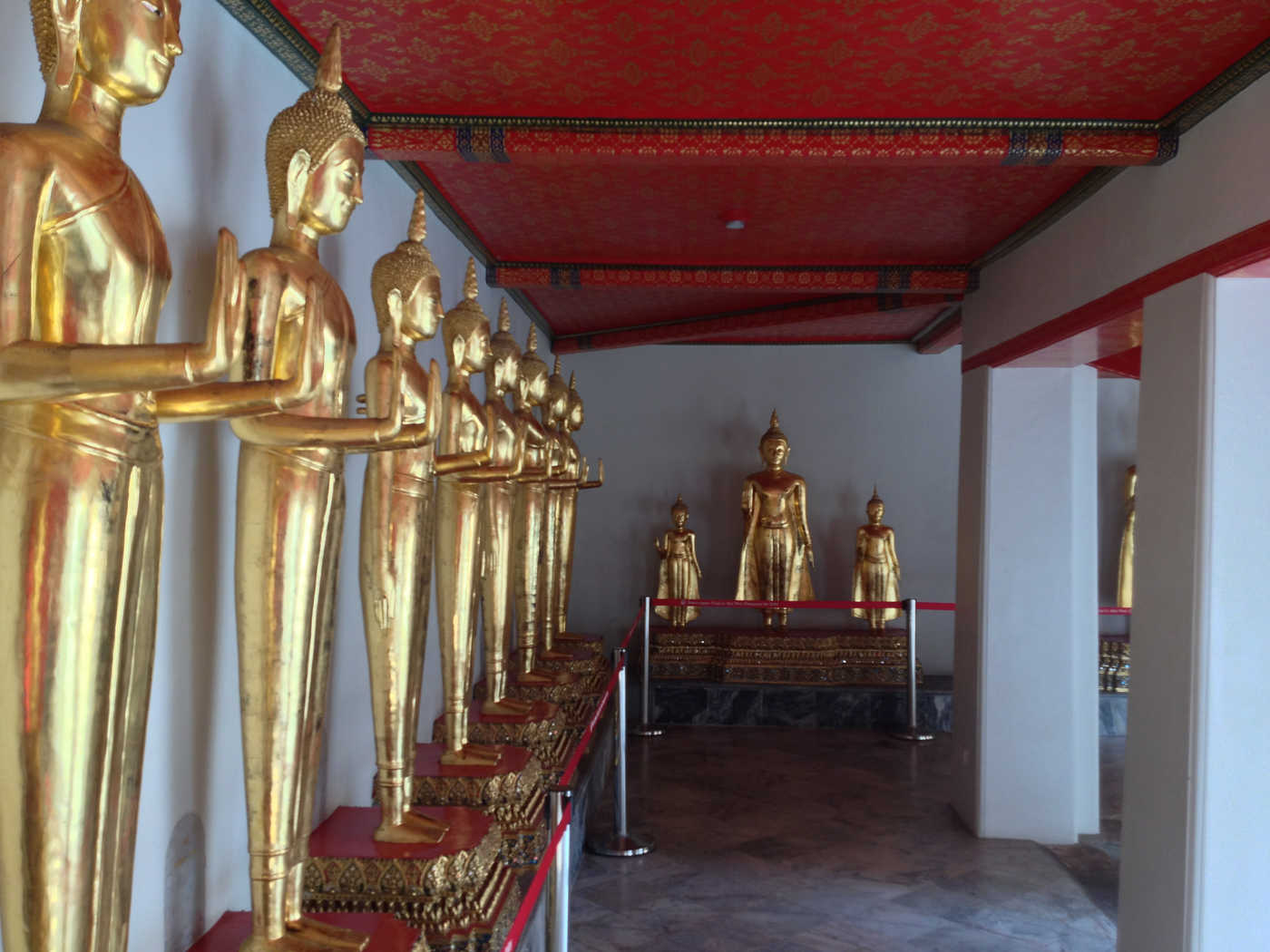This is Wat Pho, or more accurately, a small corner of the 20 acre complex.
The builders of Wat Pho really liked Buddhas.
There are hundreds of them.
Wat Pho is a royal wat south of the Grand Palace of Bangkok. It’s old, large, and dense. It has a lot of open spaces that seem larger than they are, obscuring the wat’s size and dimensions. Wat Pho has a large number of temples and you can spend hours there.
Don’t be intimidated by the imposing stone guards at the gates. They’re friendly. Unless you’re impure of heart, in which case they’ll come alive and kill you.
These statues were used as ballast on the return voyage from China. It doesn’t seem to be clear what’s up with them, but one theory is that they express the might of Thai trade. The Thai viewed trade not as an exchange of goods but as sort of a system of mutual respect–I honor you, you honor me. So the presence of the Chinese guards sends a message: look how the Chinese honor us, with their trade.
That might explain these guys:
Thailand is the only Oriental nation to never surrender to Western colonialism, a feat accomplished with clever politics, open trade, and by playing local and colonizing powers against each other. In particular, every neighbor of Thailand became a colony of a Western power.
(Addendum: An earlier revision of this post claimed that Thailand never conceded anything to the West. This isn’t quite true. During the colonial period, the Siamese kingdom ceded disputed zones to the West in the face of French diplomatic trickery. They retained only their Malaysian disputed territory, which they still control–and is still disputed by Muslim separatists. This ended aspirations of a great Siamese military empire, but in exchange secured independence.
After these events, the name ‘Thailand’ became popular, since Siam now consisted almost exclusively of undisputed, liberated Thai territory (and some Malayasians). ‘Thailand’ can also be punned as ‘Tai Land’, the land of the free. So Thailand never ceded territory it controlled, only imperial claims and aspirations. Whether or not this counts as ‘surrendering to the West’ depends on who you ask.)
An alternate theory, however, claims they are statues of Marco Polo. “There are four pairs of Marco Polo,” says one website. I didn’t know Marco Polo came in pairs.
Anyway, all that is just what I heard; I’m not a Thai cultural expert. It could be all the guardian statues have no meaning, and are just there because it seemed like a nice place to put them. The Western stone giants get a place of honor guarding the Temple of the Reclining Buddha.
The reclining state represents his entering Nirvana. This is the largest such depiction. For perspective, look at the wreath of flowers in the lower left.
The reverence levels paid to the Reclining Buddha were relatively low (by Thai standards). It was mostly a tourist attraction and donation center. Other Buddhas were more highly revered, particularly the one at the center of the wat.
Many Thai come here to pray and meditate, and many tourists come here to sit awkwardly and accidentally commit social transgressions. Guards are present to make sure you sit–you may not simply walk through, you must sit–and that you do not point your feet toward the Buddha or anyone else for that matter. The feet are unclean, and it is deeply offensive to point them at another human.
The wat was also the birthplace of Thai massage. I conducted some in-field research on Thai massage, and concluded the expression on the client’s face below is an accurate depiction. Notice her foot is planted on his butt–this is purely for leverage.
Part of the fun of Wat Pho is not knowing what is going on. As you wonder, you find only questions. Why are there so many Buddhas? What do their poses mean? There are mosaics and inscriptions and statues and towers–what do they mean? What is really with those Chinese and Western guards? Is the architecture significant? Why is the wat laid out the way it is? Nothing in religious architecture is purposeless. But the available English literature (read: stuff I found on Google) is sparse and contradictory.
As stated before, the complex is very large, and the size is obscured from within. It’s highly symmetrical and somewhat mazelike. It’s easy to get lost. You think, “I was just in here, this is the hall full of Buddhas.” But in this hall, they are all raising one hand, whereas they had folded hands in the other hall, or something.
There is something neat about freely wandering someone else’s deeply holy place, getting lost in the maze, continually encountering new things that surely have some significant meaning–but you don’t know what. It’s like in stories, when they explore the ruins of a lost civilization. But it isn’t lost, it’s right there in Bangkok. All you have to do is fly halfway across the world to see it.
